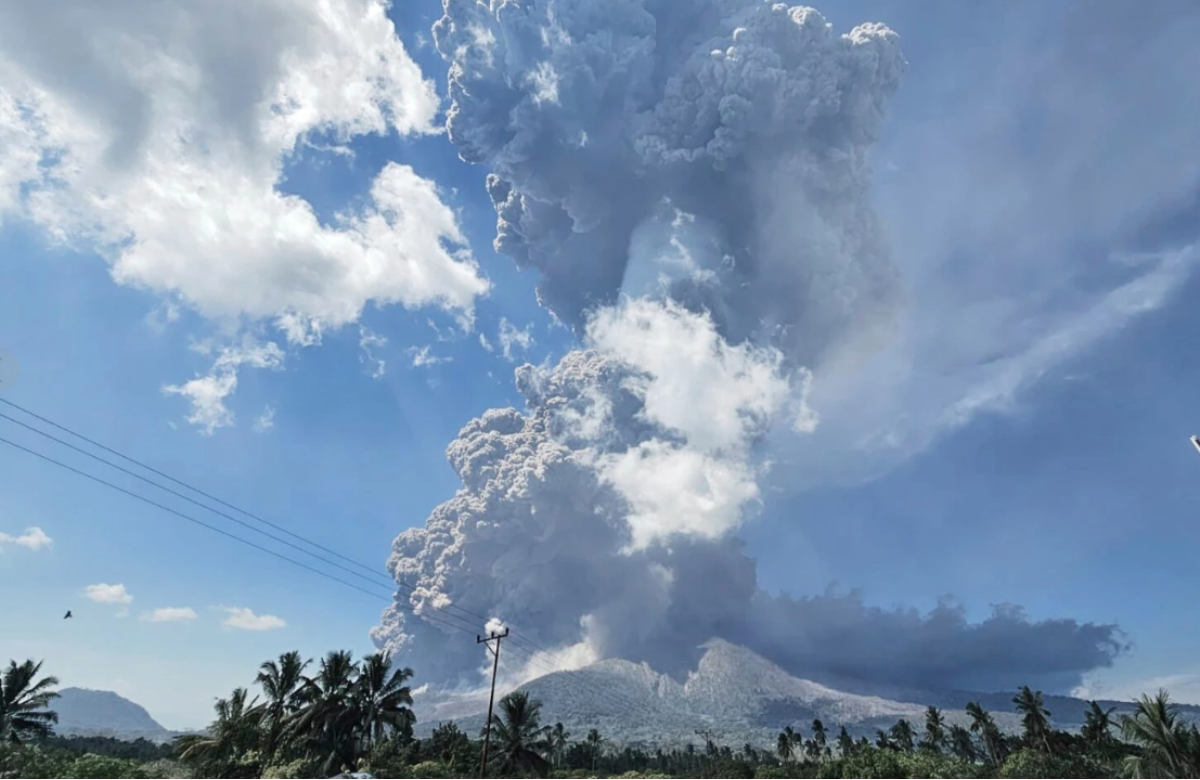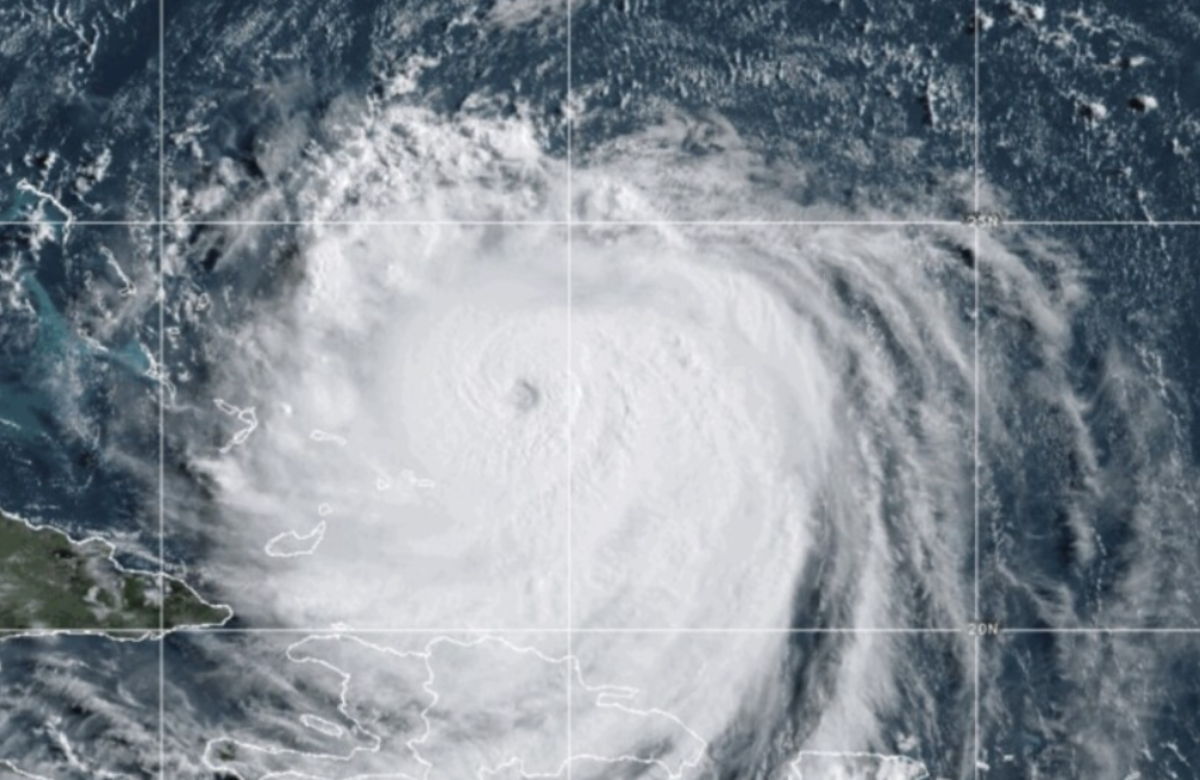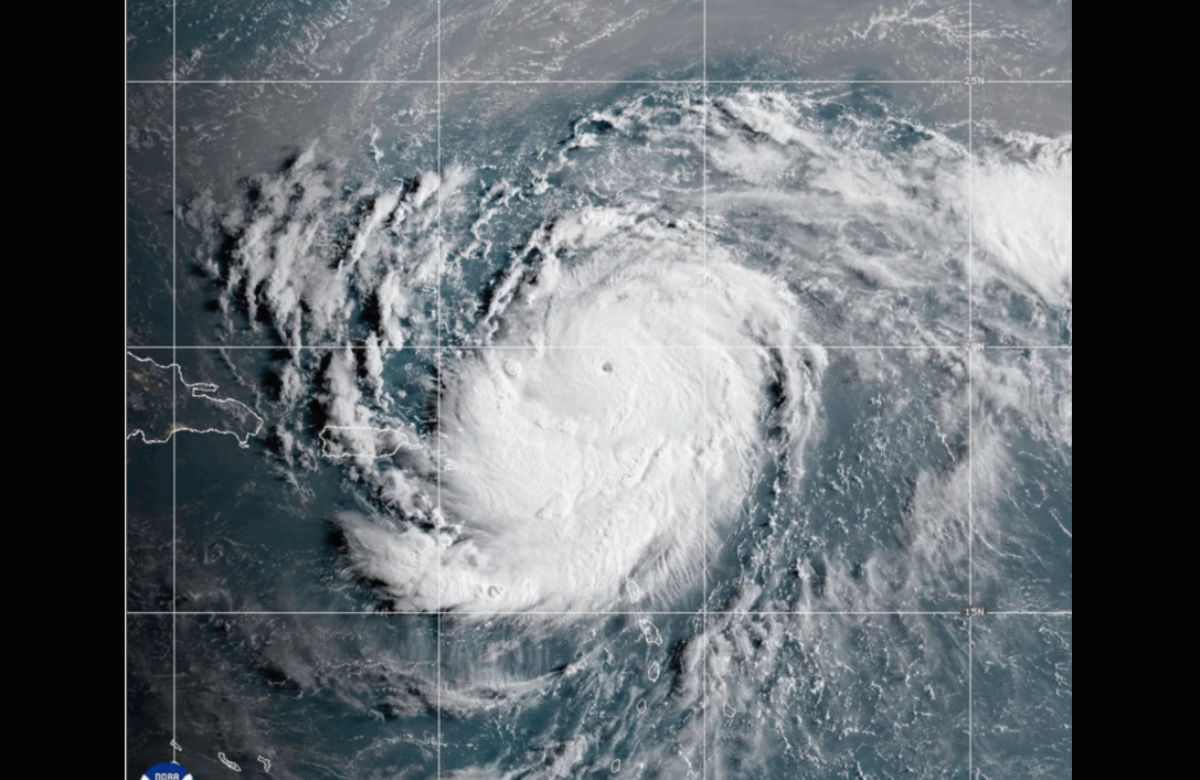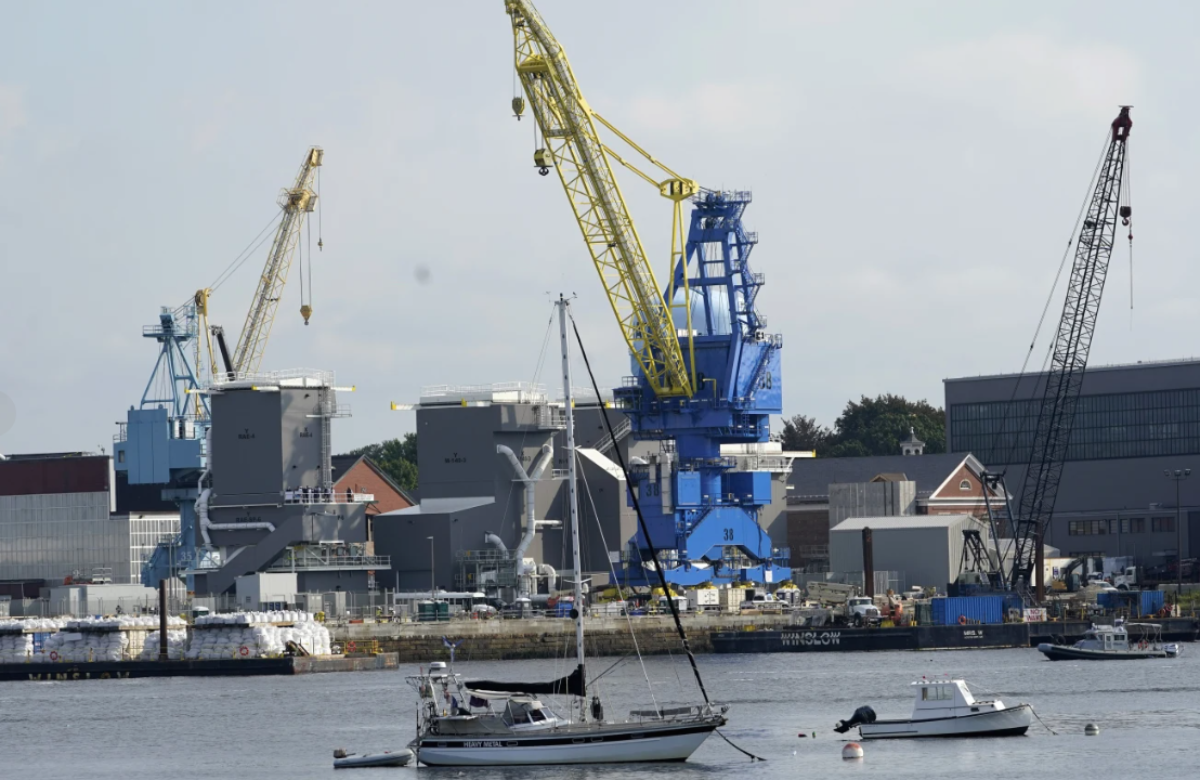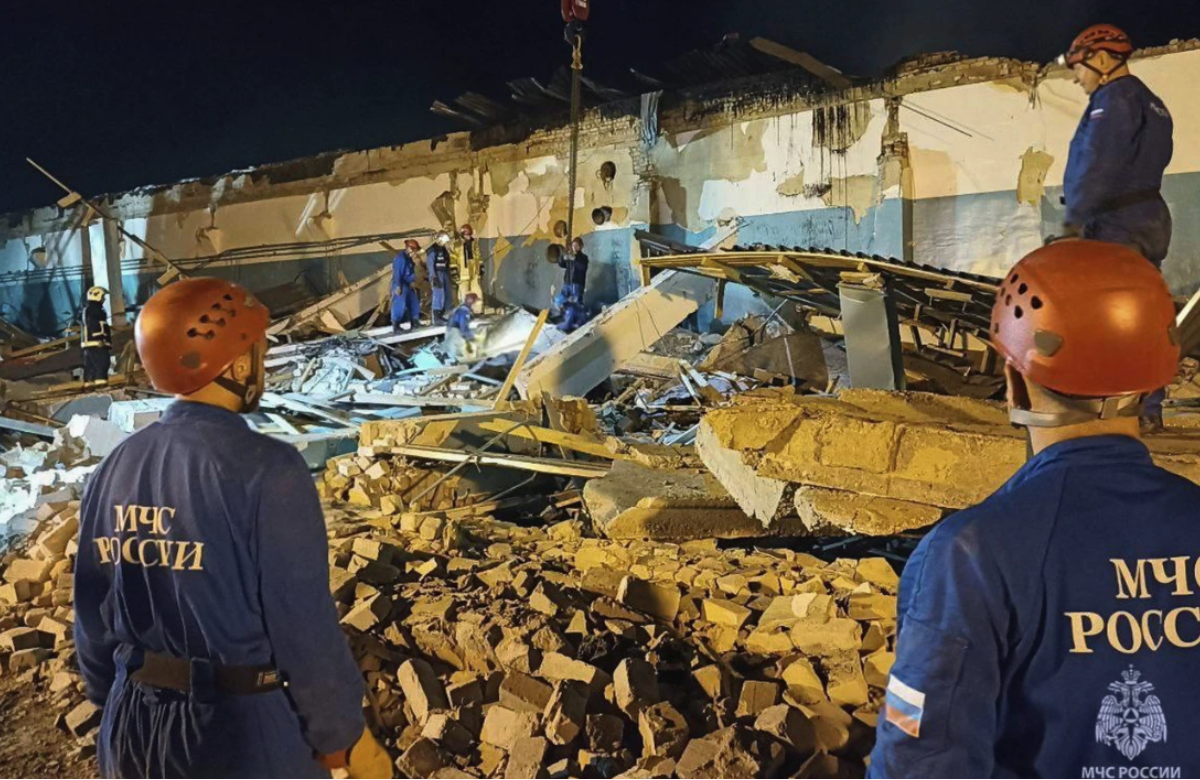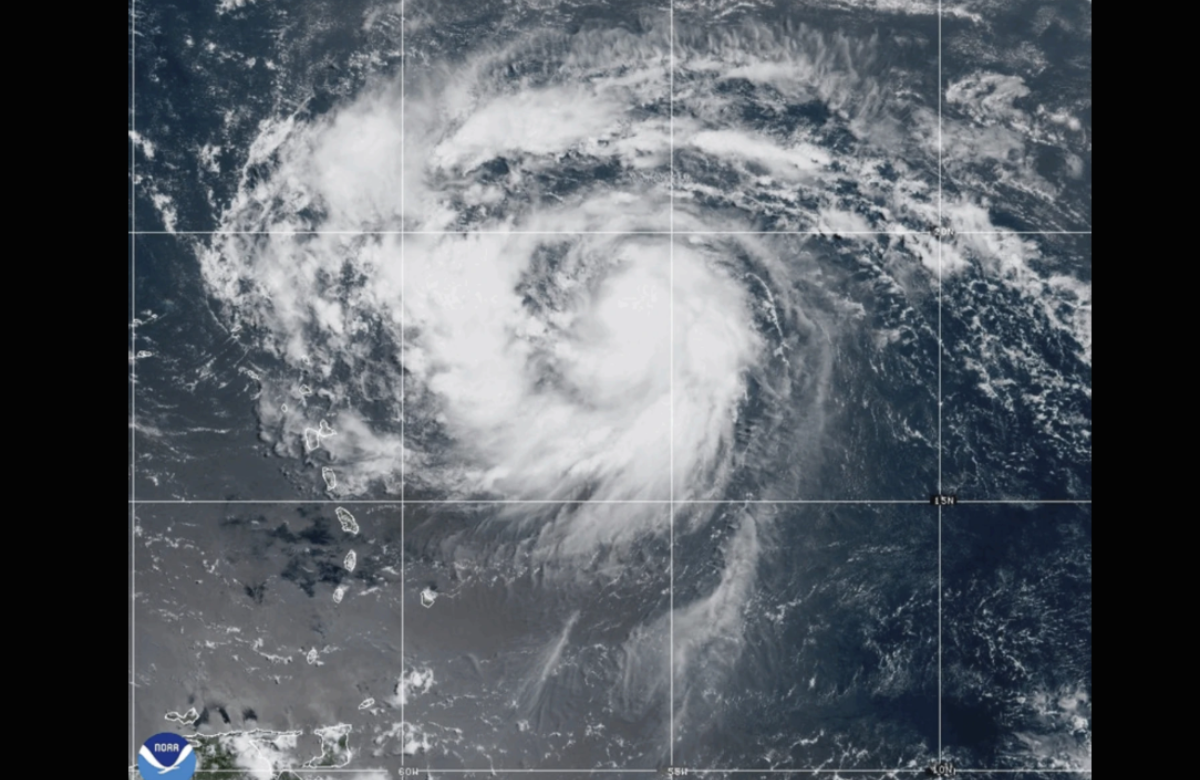Mount Lewotobi Laki Laki on Indonesia’s Flores island erupted twice on Monday, spewing volcanic ash and debris as high as 18 kilometers (11 miles) into the sky. The eruptions led to ashfall over nearby villages and caused numerous flight cancellations, though no injuries have been reported so far.
The volcano, standing 1,584 meters (5,197 feet) tall, has been on its highest alert level since an eruption on June 18. Officials have expanded the exclusion zone around the volcano to a 7-kilometer (4.3-mile) radius due to increasing eruption frequency.
Indonesia’s Geology Agency reported that intense avalanches of hot gas, mixed with rocks and lava, raced down the slopes up to 5 kilometers (3 miles). Drone footage revealed lava filling the crater, indicating active magma movement deep below, which has also triggered earthquakes.
Muhammad Wafid, head of the Geology Agency, noted that the initial eruption shortly after 11 a.m. local time was the tallest since a major blast in November 2024 that killed nine people and injured many others. He also confirmed the volcano had erupted earlier in March.
“This scale of eruption carries significant risks, including effects on aviation,” Wafid said. “We will reassess the danger zone and likely expand it to keep residents and tourists safe.”
The volcano erupted again just after 7:30 p.m., sending ash clouds up to 13 kilometers (8 miles) high, according to the Center for Volcanology and Geological Disaster Mitigation.
By Monday afternoon, at least 24 flights between Bali and international destinations such as Australia, Singapore, and South Korea were canceled, with several others delayed. Four domestic flight routes were also affected, according to Ahmad Syaugi Shahab, spokesperson for Bali’s Ngurah Rai International Airport. Despite the disruptions, the airport continued operating normally, as ash had not reached Bali’s airspace.
Villages near the volcano were blanketed in ash and debris following the first eruption, which blocked sunlight for nearly 30 minutes. Volcanic fragments, some as large as thumb-sized gravel, were thrown up to 8 kilometers (5 miles) away from the crater.
Authorities warned locals to stay alert, especially with heavy rains expected that could trigger dangerous lava flows in rivers fed by the volcano.
Photos and videos circulating on social media showed a massive mushroom-shaped ash cloud and volcanic debris piling up on rooftops in nearby villages. Some residents fled in panic, while others sought shelter from the falling ash.
Experts explained that the eruptions were caused by magma blockage inside the crater, which reduced seismic signals while pressure built up until the explosion.
This eruption is one of Indonesia’s most powerful since 2010 when Mount Merapi erupted on Java island, killing 353 people and forcing over 350,000 to evacuate.
Indonesia, home to over 280 million people, lies on the Pacific “Ring of Fire,” a zone of intense seismic and volcanic activity. With 120 active volcanoes, the country regularly experiences earthquakes and eruptions.
Also Read:
Indonesia’s Mount Lewotobi Laki Laki volcano Erupts, Massive Ash Cloud Seen 90 Miles Away!
Indonesia’s Mount Lewotobi Laki Laki volcano erupts, prompting alert level to be raised
